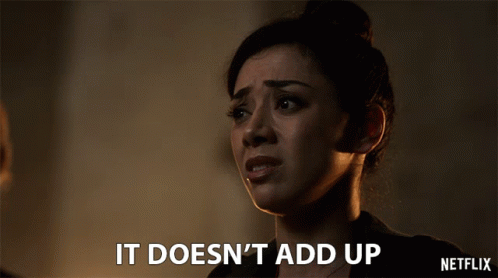- The Pragmatic Investor
- Posts
- Midweek Deep Dive: 🛑 Everyone Still Thinks HOOD Is a Meme Stock
Midweek Deep Dive: 🛑 Everyone Still Thinks HOOD Is a Meme Stock

🌞 Good Morning, Folks!
Wall Street’s reaction to Robinhood this week doesn’t add up. A broker that was written off as a meme-stock relic suddenly rips 12% in a day, and the media can’t decide whether to crown it the future of finance or dismiss it as a gambling app in disguise. Both takes miss the point.
Because beneath the noise, something bigger shifted. Robinhood isn’t just catching a hype wave—it’s rewriting its identity in plain sight. The headlines screamed about price action, but the real signal is hiding in what fueled it: forced S&P 500 flows colliding with a new growth engine few people thought would scale this fast.
Most investors only saw the chart. They didn’t see the structural move. They didn’t see billions in passive funds buying because they had no choice. And they didn’t pay attention to the fact that Robinhood quietly cleared 4 billion event contracts, half of them in just one quarter. That’s not meme stock froth—that’s engagement turning into habit.
I’ve seen this cycle before: the crowd scoffs at new models until the numbers stack too high to ignore. By then, the risk/reward has already tilted. The easy positioning is gone, and the late money is left wondering how they missed it.
That’s why this midweek lens matters. It’s not about cheering for Robinhood or betting against it. It’s about seeing through the noise to what the market is actually rewarding: platforms that turn speculation into daily engagement.
In today’s This Week’s Focus, I’m breaking down why HOOD’s latest surge wasn’t random, why the market still doesn’t fully get it, and what I’m watching next.
This isn’t about chasing the story of the week. It’s about spotting the inflection that everyone else will recognize only in hindsight. That’s the signal. And it’s hiding right here.
🌐 From Around the Web
💡 Collins Cautions: Rate Cuts Aren’t A Lock
Boston Fed President Susan Collins is pushing back on the idea of aggressive cuts ahead, stressing that a “modestly restrictive” stance still has merit. The market loves the “Fed cuts ahead” narrative—but when insiders start dialing back enthusiasm, that’s when complacency gets punished.
🚗 Buffett Exits BYD—Is The EV Story Fading?
One of the world’s greatest value investors just unloaded his position in BYD. Yes, EVs are the future, but when the smart money walks away, it’s worth asking whether the growth is priced for perfection—and what happens if perfection doesn’t arrive.
⚠️ Shutdown Looms Again: Markets Are Quiet, But Risk Grows
The U.S. faces a possible government shutdown, and markets are already showing signs of unease. Everyone’s watching tech and AI, but the real risk is policy paralysis and delayed data flow. That’s the kind of disruption that won’t wait for perfect setups.
TOGETHER WITH OUR PARTNER
Earn Your Certificate in Real Estate Investing from Wharton Online
The Wharton Online + Wall Street Prep Real Estate Investing & Analysis Certificate Program is an immersive 8-week experience that gives you the same training used inside the world’s leading real estate investment firms.
Analyze, underwrite, and evaluate real estate deals through real case studies
Learn directly from industry leaders at firms like Blackstone, KKR, Ares, and more
Earn a certificate from a top business school and join a 5,000+ graduate network
Use code SAVE300 at checkout to save $300 on tuition.
Program starts February 9.
🔍 This Week’s Focus: HOOD - The Bet Wall Street Can’t Ignore

Robinhood shocked the market.
Stock ripped 12% in one day.
A record high.
And here’s the kicker—this wasn’t meme mania. No Reddit pump, no crypto frenzy. The catalysts were cleaner, bigger, harder to dismiss: S&P 500 inclusion forcing billions in passive buying, and a bombshell disclosure that Robinhood has processed 4 billion event contracts, with half of them in Q3 alone.
That’s not noise. That’s narrative.
Most investors still think of HOOD as “the free-trading app that broke during GameStop.” They’re stuck in 2021. The scar tissue blinds them. But HOOD just pivoted into something different: a financial engagement engine where people trade not just stocks, but outcomes.
If you miss that shift, you’ll miss more than a trade—you’ll miss the start of a new category.
💸 The Numbers I Can’t Ignore

HOOD jumped 12% Monday, hitting an all-time high and becoming the top performer in the S&P 500 this year.
4 billion event contracts traded all-time, with 2 billion in Q3 alone—that’s parabolic growth.
S&P 500 inclusion forced index funds and ETFs to buy—flows that have nothing to do with hype and everything to do with rules.
Needham raised its target from $120 → $145, citing momentum in equities, options, and event contracts.
HOOD is trading at multiples that say one thing: the market is no longer valuing it as just a broker.
🔍 Where I Stand
Let me be blunt: I’ve lived through every hype cycle of the past 25 years. Dot-coms, housing, crypto, you name it. And I’ve learned one rule—most investors only recognize transformation after it’s safe. By then, the big money’s gone.
That’s the danger here.
The crowd still sees Robinhood as fragile. I don’t. I see a company deliberately stretching its identity. No longer “just a broker,” but a speculation platform in disguise. Call it brokerage, call it betting—it doesn’t matter. What matters is engagement.
Event contracts solve Robinhood’s biggest problem: episodic activity. Trading spikes during volatility, then fades. But people always have opinions. Elections. Sports. Economic data. Event contracts turn opinions into trades. Trades into engagement. Engagement into habit. And habits build moats.
The critics will sneer and call it gambling. But the bigger truth? Robinhood is turning speculation into a daily sport.
🧠 The Broader Narrative Shift
The pivot isn’t just tactical. It’s existential.
Robinhood isn’t fighting Schwab anymore. Schwab is battling to keep aging clients. E-Trade is fighting irrelevance. DraftKings is fighting to keep bettors. Coinbase is fighting regulators.
Robinhood? It’s stealing ground from all of them.
Think about it:
Like Schwab, it offers stocks.
Like DraftKings, it offers bets.
Like Coinbase, it offers crypto.
Like TikTok, it feeds dopamine.
That’s not a broker. That’s a financial super-app in training.
And if Robinhood convinces the market that engagement equals growth, Wall Street will re-rate the stock not as a broker, but as a platform. That’s a multiple expansion game. And that’s why this matters now.
💸 The Scar Tissue Lesson
I’ve seen this movie before.
In 1999, investors valued eyeballs like revenue. In 2017, crypto wallet downloads were treated like profits. Both ended in crashes because engagement didn’t translate to cash flow.
Robinhood is walking the same tightrope. The volumes are real. But the monetization must follow. If they report clear revenue from event markets in the next two quarters, the narrative sticks. If they don’t, it cracks.
Here’s the difference: unlike dot-coms or early crypto, Robinhood already has a regulatory framework (CFTC oversight), distribution (25M+ users), and flows (S&P inclusion). The infrastructure is in place. That’s why this isn’t pure hype—it’s execution risk.
📊 What I’m Tracking Next
Revenue disclosures: Do they break out prediction-market income? If yes, that’s a legitimacy milestone.
Regulatory clarity: Kalshi’s lawsuits will define whether these contracts are finance or gambling. Either way, clarity is better than limbo.
User growth vs. cannibalization: Are event contracts attracting new customers or just recycling existing ones?
Institutional adoption: If hedge funds test these markets, the platform’s credibility multiplies.
Retention metrics: Daily active users should rise. If they don’t, the story falters.
✅ Takeaway
HOOD’s surge wasn’t random. It was the collision of flows and story—passive money forced in by index rules, and a new growth narrative too big to ignore.
Investors who still think Robinhood is just “that meme app” are making the oldest mistake in markets: anchoring to the past. The real risk isn’t buying too soon. It’s staying stuck in yesterday’s story while Robinhood builds tomorrow’s.
The scar tissue says be cautious. But the setup says be curious.
Because this isn’t about chasing hype. It’s about seeing when a company is no longer playing in its old league. Robinhood just left the brokerages behind—and the crowd hasn’t caught up.
TOGETHER WITH OUR PARTNER
Used by Execs at Google and OpenAI
Join 400,000+ professionals who rely on The AI Report to work smarter with AI.
Delivered daily, it breaks down tools, prompts, and real use cases—so you can implement AI without wasting time.
If they’re reading it, why aren’t you?
🧠 What did you think of today's newsletter? |
🧠 Final Word
The market is noisy right now. HOOD surges 12% in a day, and suddenly the headlines swing between “casino” and “category-breaker.” That’s what markets do — they exaggerate both the promise and the peril, leaving most investors caught in the whiplash. I’ve seen this movie before: new business models get dismissed as gimmicks until the numbers stack too high to ignore, and by then, the easy positioning is gone.
Here’s where I land: conviction doesn’t come from chasing the story or rejecting it outright — it comes from holding steady while the crowd argues at the extremes. The real edge isn’t predicting every quarterly beat, it’s recognizing when a company’s narrative has shifted and staying disciplined enough to test it against facts, not moods. HOOD isn’t just noise; it’s a reminder that markets reward those who can see through the blur and hold their ground while others flinch.
Stay Sharp,
— AK

Disclaimer: The content on this blog is for educational and informational purposes only and is not intended as financial, investment, tax, or legal advice. Investing in the stock market involves risks, including the loss of principal. The views expressed here are solely those of the author and do not represent any company or organization. Readers should conduct their own research and due diligence before making any financial decisions. The author and publisher are not responsible for any losses or damages resulting from the use of this information.



Reply